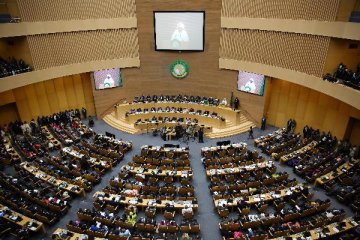
Introduction[1]
Lack of energy access presents a formidable, but not insurmountable, challenge to African development. Energy poverty afflicts nearly 620 million people in Africa, limiting economic opportunities and creating health risks through the use of low-cost, alternative energy sources, such as wood fuel (IEA 2014). Without access to secure, reliable sources of electricity, households, businesses, schools, and hospitals cannot operate effectively, reducing quality of life and restricting human capital. As acknowledged in the global sustainable development agenda, addressing these energy needs is fundamental to achieving economic and human development objectives. African governments and their partners in the private sector and international development community have taken this to heart as can be seen by the growing policy attention and resources they are allocating to the
continent’s energy sector.
Financing to address Africa’s energy infrastructure needs is estimated to have reached $8 billion in 2013 (APP 2015). Domestic public financing comprised nearly half of these investments while external financing—including private participation in infrastructure (PPI), official development finance (ODF), and Chinese investments—accounted for the rest. Still, the estimated cost of contending with Africa’s energy infrastructure needs is staggering, amounting to approximately $63 billion in 2013 alone. This still leaves a financing gap of approximately $55 billion unresolved (APP 2015).
Yet, aggregate figures like these obscure understanding of which actors are financing energy infrastructure, how, and where across the continent. The following paper analyzes the trends, strengths, and weaknesses of various sources of energy infrastructure financing in Africa—including domestic public domestic investment, PPI, ODF, and Chinese financing. Furthermore, it contends that although lack of both capital and bankable projects poses a significant obstacle for expanding infrastructure financing in the continent, particularly for renewable energy projects, a solution involving a greater participation of development banks in the earlier stage of projects and leaving private funds to finance the less risky, latter stages of projects should be explored.
Trends in African energy infrastructure financing[2]
Financing sources for African energy infrastructure include domestic financing by African governments and external financing in the form of ODF from multilateral institutions (such as the African Development Bank and the World Bank, as well as most of the OECD-DAC donors), PPI, and Chinese financing.
In terms of the breadth of its financing sources, the energy sector is comparable to the transportation sector in the sense that it relies on a combination of financing from governments, ODF, China, and PPI (see Table 1). Other sectors, such as the telecommunications (telecom) sector depend predominantly on a reduced number of financing sources—in this case, private sector investments. A closer look at the transportation sector suggests, however, that some subsectors rely on fewer financing options than others. This trend also appears to be the case in the energy sector where the private sector is mostly interested in the generation subsector, leaving investment in the transmission and distribution (T&D) subsectors to other financiers such as African governments and China.



















Latest comments